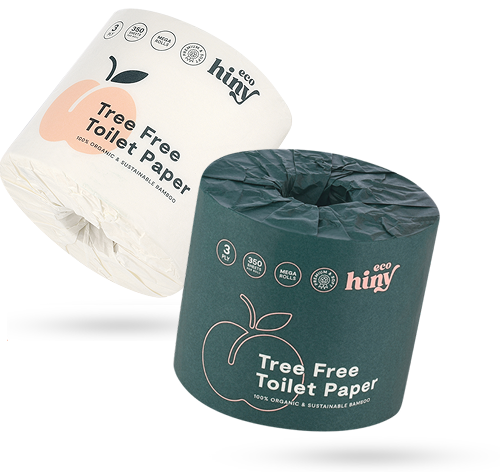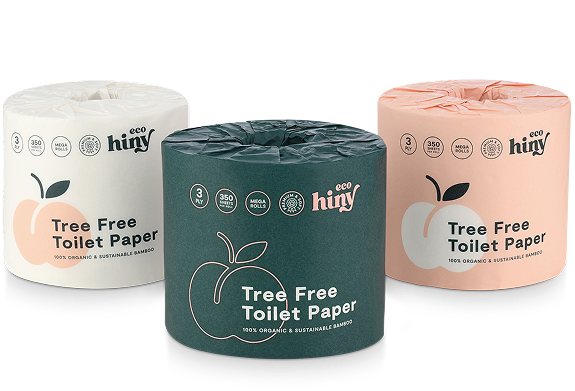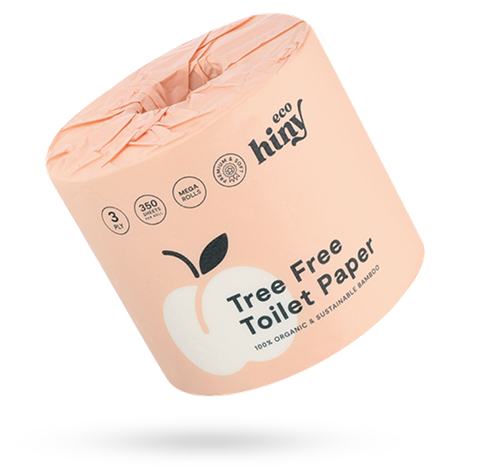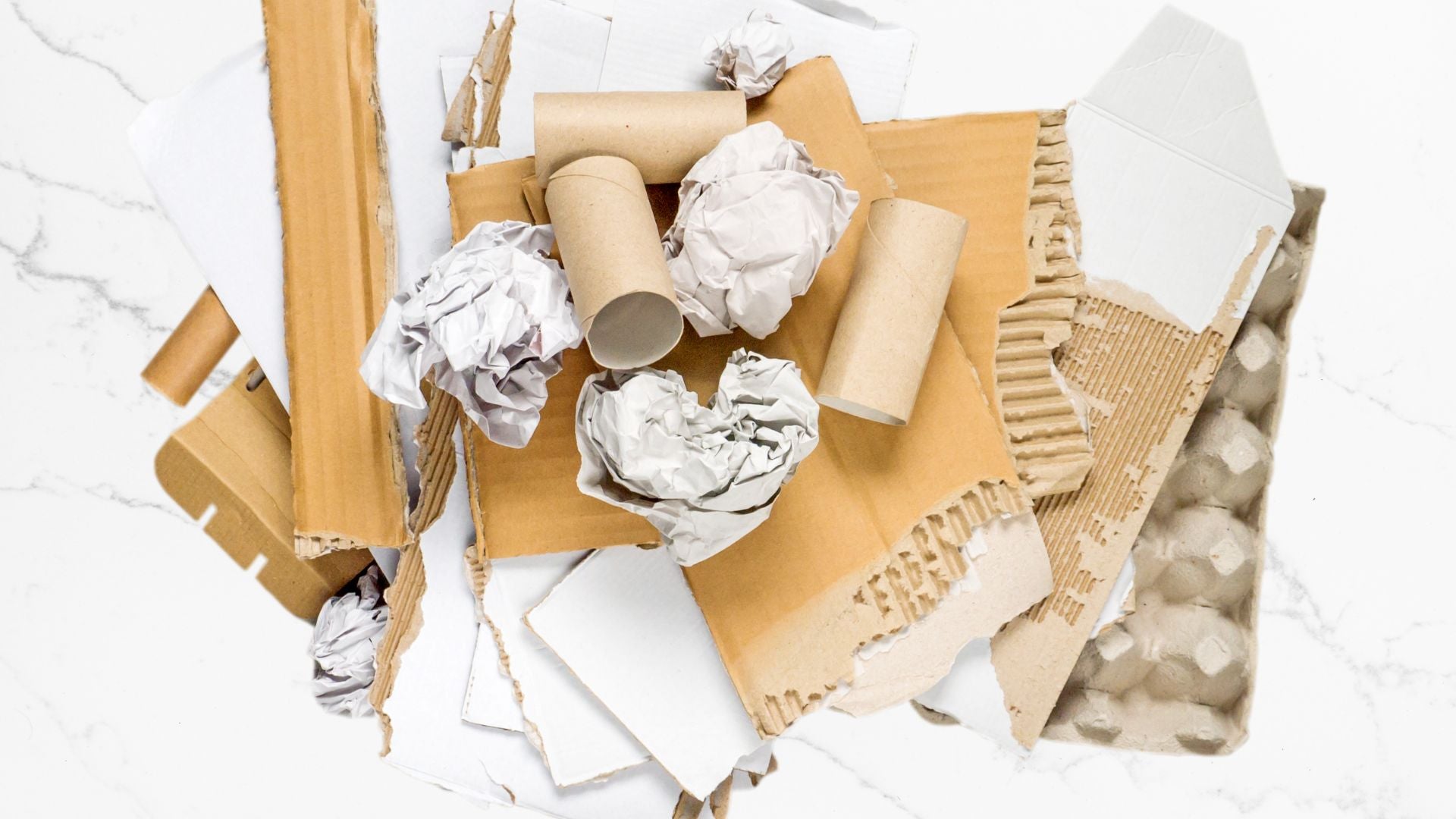Key Points
- Paper is biodegradable and compostable when made from natural, chemical-free materials like bamboo, but additives can slow or block this process.
- Where and how paper is disposed of matters — composting in the right conditions is more effective and eco-friendly than landfill biodegradation.
- ecoHiny’s bamboo toilet paper is fully biodegradable, compostable, and non-toxic, making it a safer and more sustainable household choice.
Biodegradable vs Compostable Paper
Paper is biodegradable, which means it has the ability to break down and decompose into natural substances when exposed to the elements.
This environmentally friendly quality ensures less waste in our landfills and minimal strain on our ecosystems. What does biodegradability mean to you and your household?
Well, it's an important factor when weighing what paper products to purchase, and ecoHiny is here to give you insight into what you should consider.
Why is Paper Biodegradable?
Plant materials are biodegradable because they are made up of organic compounds that can be broken down by microorganisms such as bacteria and fungi. These organic compounds, such as cellulose, hemicellulose, and lignin, are the main structural components of plants and are responsible for their strong and durable nature. (1)
When plants die and decompose, these compounds are broken down by microorganisms through a process known as biodegradation. During this process, microorganisms secrete enzymes that break down the complex organic compounds in plant materials into simpler compounds such as water, carbon dioxide, and other organic molecules. (2)
Since paper is made from plant material, it is a biodegradable product.

Hypoallergenic,BPA-Free, PFAS-Free, Elemental Chlorine-Free
ecoHiny's 3-ply bamboo toilet paper.
From $15.99
Factors That Affect Paper Biodegradability
The biodegradability of paper depends on various factors such as the chemical composition of the paper, the presence of coatings or additives, and the conditions in which it is disposed of.
Generally, paper made from natural fibers such as wood pulp or cotton is biodegradable as these materials can be broken down by microorganisms in the environment. However, if the paper is coated with synthetic materials or contains chemicals that resist degradation, it may not be fully biodegradable. (3)
The chemicals often used to treat paper can affect biodegradation. Certain chemicals, such as bleach and other whitening agents, can make it more difficult for paper to biodegrade. This is because these chemicals can alter the structure of the paper fibers, making them more resistant to natural processes.
The conditions in which the paper is disposed of can also impact its biodegradability. Suppose the paper is buried in a landfill where oxygen and moisture are limited. In that case, it may take much longer to break down compared to paper that is composted or exposed to natural elements like air, water, and sunlight.
What Does This Tell Us About Being Eco-Friendly?
Understanding that biodegradability depends on the physical and chemical makeup of the paper, as well as where and how it's disposed of, gives us some things to think about as eco-conscious consumers.
Biodegradability is important because it is a measure of how quickly and efficiently a material can be broken down by microorganisms into simpler compounds.
This process is essential for the natural cycling of nutrients in the environment and helps to maintain the balance of ecosystems. When materials are not biodegradable, they can accumulate in the environment and cause pollution, harm wildlife, and contribute to the depletion of natural resources. (3)
The paper products you purchase and the way you dispose of them are important factors when it comes to protecting the planet!
To make environmentally-friendly purchases, we should be shopping for paper products that are:
- Made from natural materials
- Not contributing to deforestation
- Minimally processed
- Free of toxic chemicals
- Able to be recycled or composted
Be Careful to Consider Packaging
The product itself might meet your eco-friendly expectations, but how about the packaging? Give the same considerations to any containers, wrapping, plastics, or boxes in which your items may be packed.
Choosing biodegradable materials and disposing of them properly is an important step in protecting the environment and preserving natural resources for future generations.
You know what products to look for; let's look at some smart disposal options.
Recycling vs. Biodegradation
Recycling and biodegradation are two different methods of waste management for paper products.
Recycling involves collecting used paper products and processing them into new paper products. In this process, the paper fibers are broken down and reformed into new sheets of paper. Recycling paper products is an efficient and sustainable way to manage waste because it conserves resources and reduces the amount of waste that ends up in landfills.
Biodegradation is a natural process where microorganisms break down organic materials into simpler substances. When paper products biodegrade, they are broken down by bacteria and other microorganisms into carbon dioxide, water, and other natural substances. Biodegradation is also a sustainable way to manage waste because it allows organic materials to return to the environment as nutrients.
Biodegradable vs. Compostable
As explained, biodegradation occurs naturally when microorganisms break down materials. Materials can actually biodegrade in various environments, such as landfills, oceans, and soils. However, those spots certainly aren't always ideal. A biodegradable product is a good start, but where it breaks down is equally important.
While biodegradation occurs naturally, composting is a deliberate and intentional process of turning organic waste into a valuable resource.
Paper: It's Compostable and That's Sustainable
Composting is a specific type of biodegradation that is controlled and optimized to produce a nutrient-rich soil amendment called compost.
Soil amendment, referring to any substance that improves the physical or chemical properties of soil, is an excellent way to promote growth in your yard or garden and advance biodiversity in our environment! (4)
Composting is a natural way to:
- Add nutrients
- Help your garden retain moisture
- Reduce the need to add fertilizer
- Aid in disease resistance
It's also an optimal way to safely and sustainably dispose of paper products.
Toilet Paper Can Be Biodegradable and Compostable
One of the most significant sources of paper waste in our households happens to be our toilet paper. That's why we recommend choosing eco-friendly toilet paper like ecoHiny 100% bamboo toilet paper. Our products align with sustainable practices in paper usage and disposal.
Because our paper contains nothing but bamboo, it's your plant-based, natural, non-toxic option that's not only biodegradable but also recyclable and compostable too!
You also get the best in biodegradable paper. Since ecoHiny contains zero toxic chemicals and is dye and fragrance-free, there are no substances that could alter the natural fibers of the bamboo and hinder its ability to biodegrade.

Hypoallergenic,BPA-Free, PFAS-Free, Elemental Chlorine-Free
ecoHiny's 3-ply bamboo toilet paper.
From $15.99
Paper Products Matter to the Environment
Making informed choices regarding household paper products can certainly impact your sustainability goals. If you're looking to reduce your footprint and become a better friend to the environment, then carefully consider your paper purchases and how you dispose of them, particularly when it comes to your toilet paper.
Toilet paper is one of, if not the most important, household essentials made from paper. One of the best ways to ensure that you're making the right choice is to look for eco-friendly toilet paper like ecoHiny.
If you're concerned about the life cycle of your toilet paper and other paper products, support sustainable and responsible brands like ecoHiny.
Source:
- "Visualizing chemical functionality in plant cell walls." National Library of Medicine, www.ncbi.nlm.nih.gov/pmc/articles/.
- "Biodegradation- Definition, Microbes, Factors, Steps." Microbe Notes, microbenotes.com/biodegradation/.
- "Understanding Non-Biodegradable Waste." Cercle X, cerclex.com/blog/impact-non-biodegradable-waste-environment/.
- "Soil Amendments." Cornell College of Agriculture and Life Sciences, cals.cornell.edu/.

Hypoallergenic,BPA-Free, PFAS-Free, Elemental Chlorine-Free
ecoHiny's 3-ply bamboo toilet paper.
From $15.99

Hypoallergenic,BPA-Free, PFAS-Free, Elemental Chlorine-Free
ecoHiny's 3-ply bamboo toilet paper.
From $15.99





